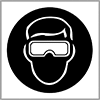Filter by
Message
Message Type
Language
Material
Accident Prevention Message Type
Message Color
Message Contains
Visibility
Export Control Classification Number (ECCN)
DFARS Specialty Metals
Specifications Met
For Pipe OD
About Accident Prevention Signs
More






















































